This page contains African Grey Parrot facts, pictures and information for kids and students. This animal is part of the Active Wild Online Zoo, where you'll find masses of animal information, pictures and videos. Visit today!
African Grey Parrot Facts At A Glance
- Other Name(s): Congo African grey parrot
- Scientific name: Psittacus erithacus
- Type of Animal: Bird, member of the order Psittaciformes (parrots)
- Animal Family: Psittacidae (subfamily Psittacinae)
- Where Found: Equatorial Africa
- Length: 33 cm (13 in.)
- Wingspan: Up to 52 cm (20.5 in.)
- Weight: Up to 490g (17.28 oz.)
- Conservation Status: Endangered
- Other interesting African Grey Parrot facts: The African Grey is closely related to the Timneh Parrot (Psittacus timneh). The two species were, until recently, both considered to be subspecies of African Grey Parrot.
African Grey Parrot Video
Watch the video below to see African Grey Parrots in the wild:
Meet The African Grey Parrot: Introduction
The African Grey Parrot is a medium-sized grey parrot. It is famous for its high intelligence and incredible ability to mimic sounds made by other animals, including human speech. An African Grey Parrot named Alex had a vocabulary of over 100 words! (We’ll find out more about Alex further down the page!)
Due to its amazing vocal abilities, the African Grey Parrot is often kept as a pet. Sadly, this has led to large numbers of wild birds being trapped and sold to the pet trade. In 2016, the African Grey Parrot's conservation status was changed to 'endangered'.
What Does The African Grey Parrot Look Like?
The African Grey Parrot is rather plain compared to many of its brightly-colored cousins. It is mostly pale gray in color, with slightly darker wings. Its neck and chest feathers have white edges, giving them a scaly appearance.
The bright red tail feathers of the African Grey Parrot provide a flash of color.
Like all parrots, the African Grey Parrot has a strong, curved bill. The upper bill curves over the lower bill and ends in a point.
The African Grey Parrot has a white face and pale yellow eyes.
On each foot are four toes, each of which ends with a sharp claw. The African Grey Parrot's feet are 'Zygodactyl'. This means that inner two toes of each foot face forwards and the outer two face backwards. This type of toe arrangement is common among climbing birds, and is found in all parrots.
The African Grey Parrot can use its feet to pick up food and manipulate objects.
The African Grey Parrot is the largest parrot found in Africa. However, it is significantly smaller than some South American parrot species.
The African Grey Parrot’s wingspan ranges from 46 to 52 cm (18 to 20.5 in.). It weighs between 400 and 490 g (14.10 and 17.28 oz.): less than half the weight of a Scarlet Macaw.
Where Does The African Grey Parrot Live?
The African Grey Parrot is found in Equatorial Africa; the area of the continent near the Equator. Countries in which the African Grey Parrot is found include: Angola, Burundi, Cameroon, Congo, Côte d'Ivoire, Democratic Republic of the Congo, Ghana, Kenya, Nigeria, Rwanda and Uganda.
African Grey Parrot Habitat
The African Grey Parrot is most often found in dense lowland rainforests. It is also found at the edges of forests, in ‘gallery forests’ (forests along rivers and wetlands), and in savannas (areas with widely-spaced trees).
African Grey Parrot Family And Relations (Warning – Scientific Stuff!)
The African Grey Parrot is a member of the order Psittaciformes. This is the group of birds otherwise known as ‘parrots’.
This order is divided into three smaller groups, or superfamilies. These are the Psittacoidea (‘true’ parrots), Cacatuoidea (cockatoos), and Strigopoidea (New Zealand parrots).
The African Grey Parrot is a member of the Psittacoidea, or ‘true’ parrot superfamily.
This group is further divided into families and subfamilies. The African Grey Parrot is a member of the subfamily Psittacinae, of the family Psittacidae.
African Grey Parrot Diet
The African Grey Parrot is mainly frugivorous (fruit-eating), and will also eat nuts and seeds. An important part of its diet is the fruit of the oil-palm tree.
The African Grey Parrot is not entirely herbivorous. Its diet also includes insects and other invertebrates.
African Grey Parrot Family Life
The African Grey Parrot is monogamous (male and female birds stay together). They build nests in holes in trees, with each breeding pair having their own tree. The nests are usually between 10 and 30 m (30 to 100 ft.) from the ground.
The female lays two to five eggs, which she incubates (keeps warm) for around three to four weeks until they hatch. During this time the male bird brings her food.
The chicks remain in the nest for eleven to twelve weeks after hatching. During this time, both parents supply them with food. The parents continue to feed the chicks for four to five weeks after they have fledged (left the nest).
The African Grey Parrot has an average lifespan of around 23 years in the wild. In captivity it may live up to 60 years.
Behavior
The African Grey Parrot lives in large, noisy flocks. The birds communicate with each other using a wide variety of sounds, including whistles, screams and squawks.
Groups of African Grey Parrots often congregate high in the branches of palm-oil trees. These groups can contain over 100 individuals. Rather than flying, the birds often hop or climb through the branches in order to reach a new position within a tree.
Flocks of African Grey Parrots will travel long distances in order to find fruit-bearing trees.
African Grey Parrot Facts: Speech and Intelligence
The African Grey Parrot is famous for being able to mimic speech. An African Grey Parrot named Alex was the subject of a thirty year study by animal psychologist Irene Pepperberg. During this time, Alex learned 100 words, and could also identify 50 shapes.
Alex was also able to recognize several colors and shapes, and understood concepts such as ‘bigger’, ‘smaller’, ‘same’ and ‘different’.
You can see a short film of Alex below:
Is The African Grey Parrot Endangered?
The African Grey Parrot is a popular pet in many parts of the world. This has led to the large scale trapping of wild African Grey Parrots for sale to the pet trade.
Many thousands of birds – perhaps 100’s of thousands – are trapped in Africa every year. The birds are badly treated and a large number die during transportation.
The wild population of African Grey Parrots is also affected by deforestation.
In 2016, the African Grey Parrot became an endangered species. Its wild population continues to decline. The closely-related Timneh Parrot is also endangered for the same reasons.
African Grey Parrot Facts: Conclusion
We hope that you have enjoyed learning about the African Grey Parrot. If you are considering owning one as a pet, do make sure that it has not been wild-caught!
If you want to help the African Grey Parrot, check out the World Parrot Trust, an organization set up to protect wild parrots.
Now see more amazing animals in the Active Wild Online Zoo!
Visit a world-class zoo without leaving your home! At the Active Wild Online Zoo you'll find FREE animal pictures, facts and information. Each page also features a specially chosen video. Discover the world's most incredible animals: visit the Active Wild online zoo today!

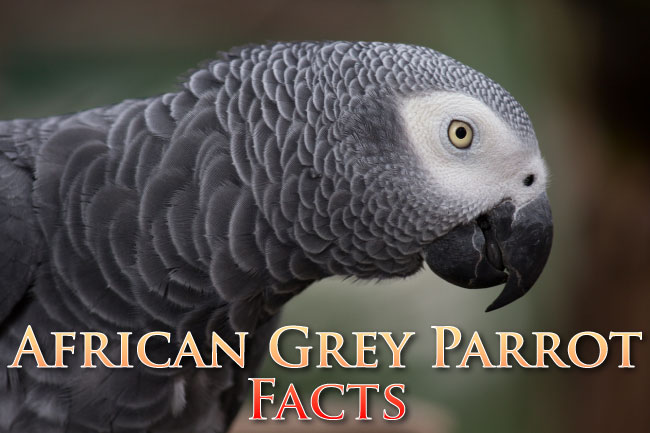

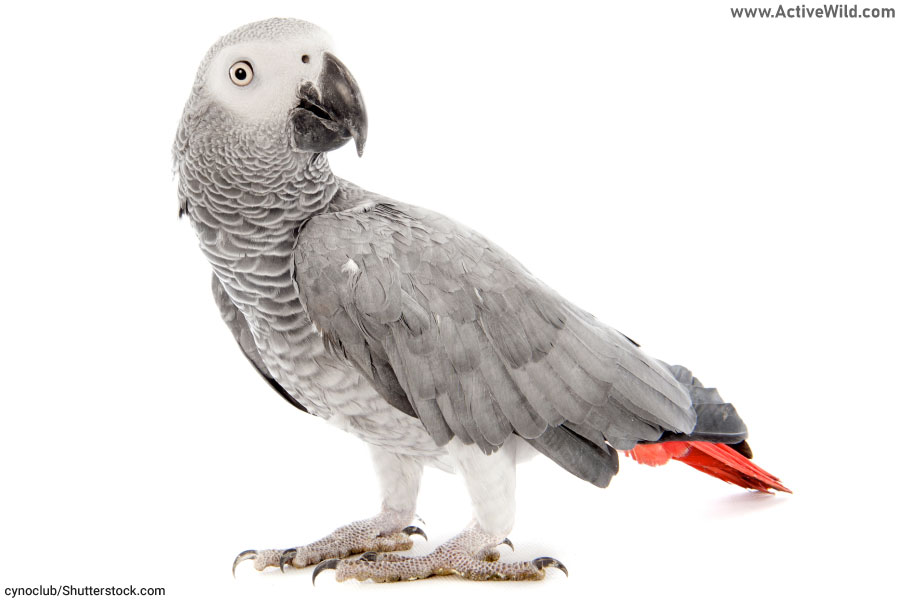
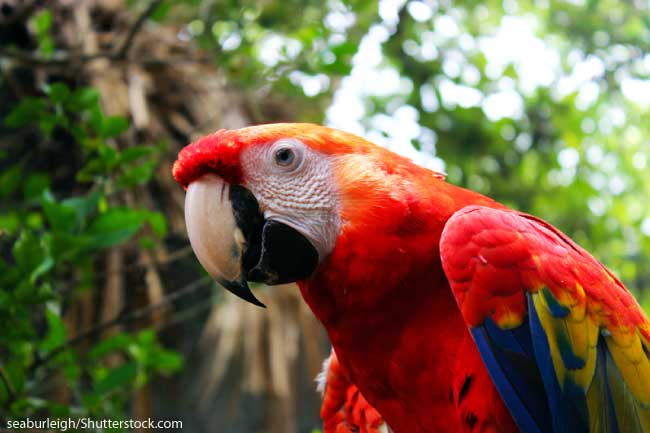
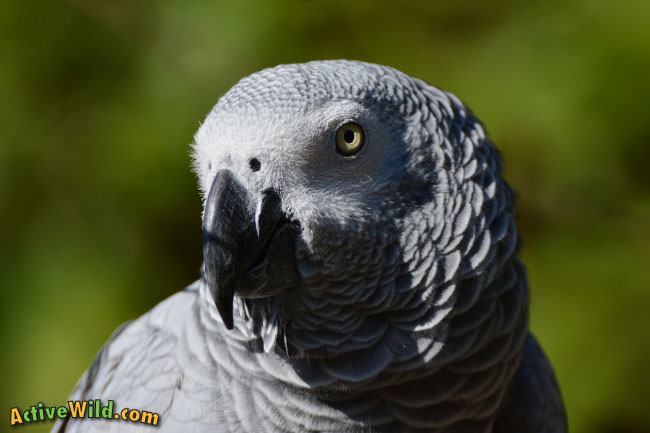
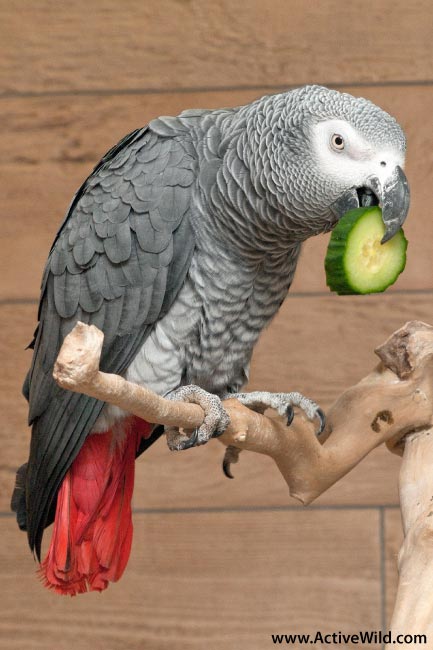

Why don’t you put a metal try to avoid. but i guess its better to have the bird dig in the ground than pick at its own feathers. its another way to destress. your bird needs human interaction and human contact.
We have a pair that we rescued from a woman who unfortunately was ill and could not care for them. They are in a very large cage outdoors. The male digs a hole in the bottom of the cage, in the dirt. I’ve researched but cannot see if African greys are known to be diggers. The hole has been filled many times, but he quickly digs again. Anyone know???
get him a bird scratcher (not a cat one)
I love africa greys i want one so badly!
nice. i have one named molly
We recently brought our Congo African grey she is amazing but hard work and need a lot of time witch other parrots may not need
I would love to buy one but I can’t
I LOVE THIS BIRD